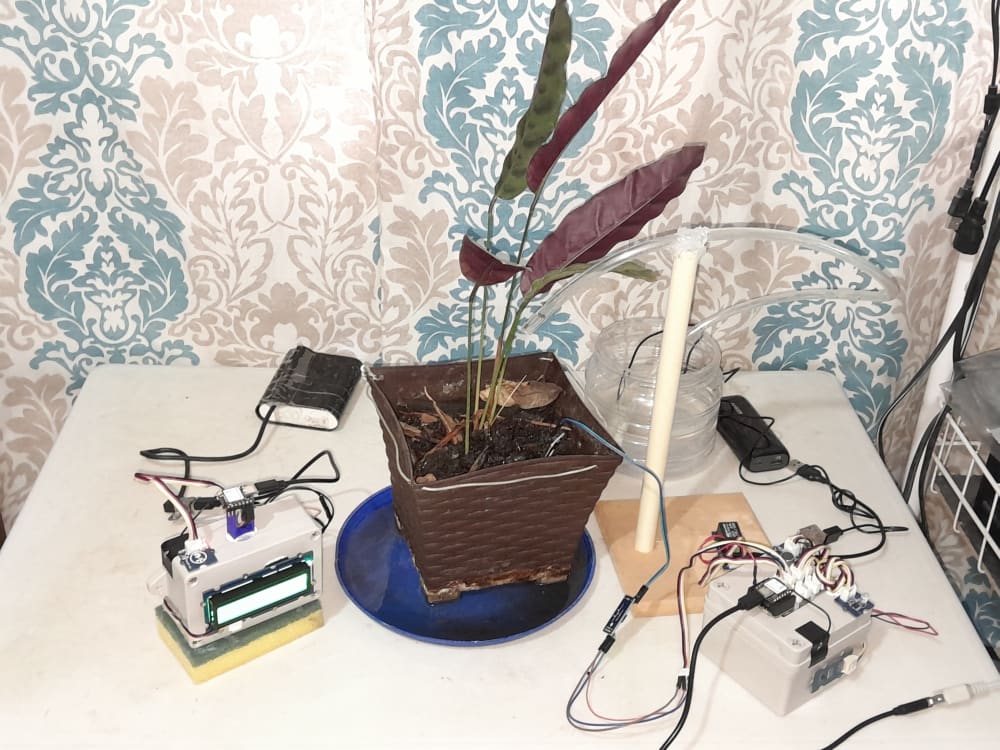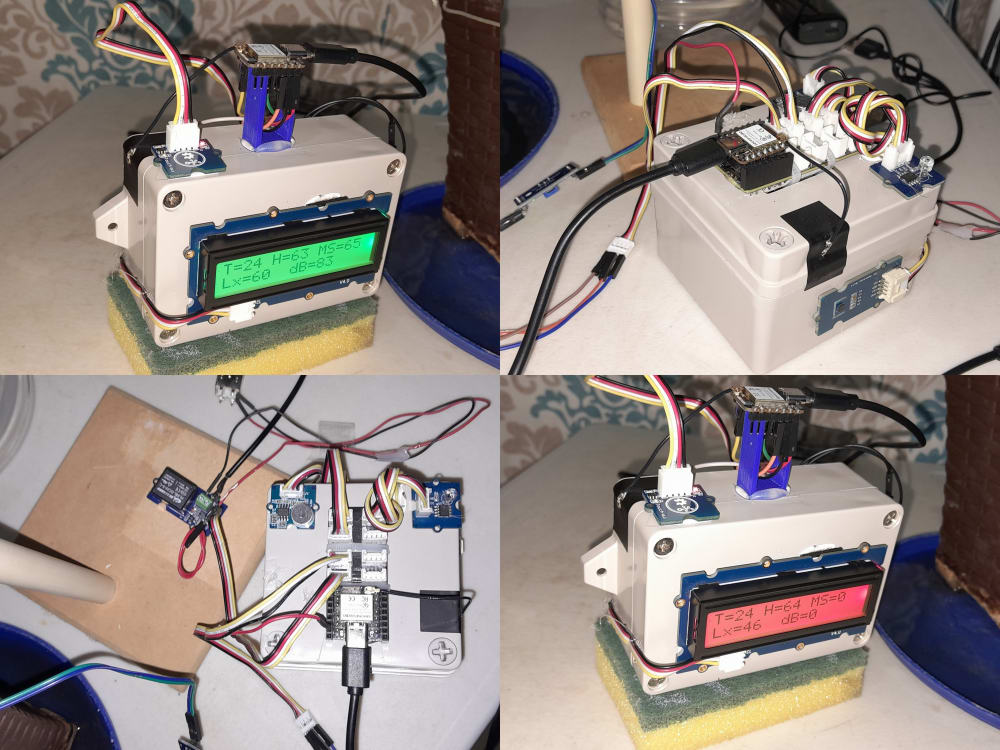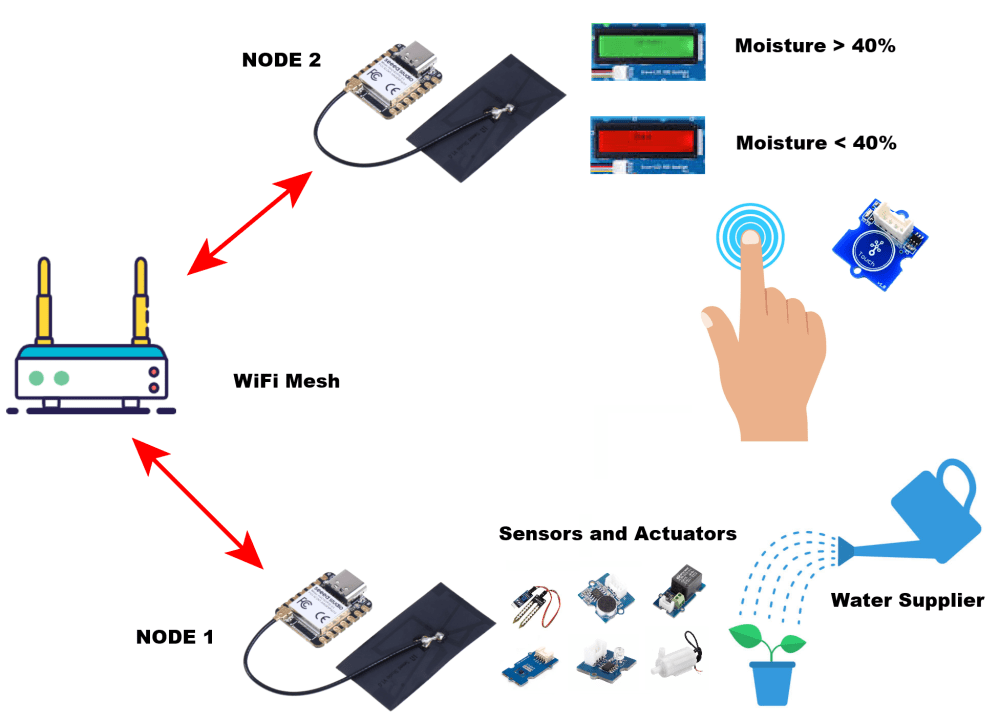Using ESP-MESH network protocol is an innovative way to monitor my plants and provide them with water, both indoors and outdoors. ESP-MESH is a networking protocol built atop the Wi-Fi protocol, and allows several ESP32S3 devices (referred to as nodes) spread over a large physical area to be interconnected under a single WLAN (Wireless Local-Area Network). This networs allows me to monitor my plants with humidity, temperature, light, and sound sensors, and when they need water I can activate a water pump remotely. Main advantage of ESP-MESH to other technologies is self-organizing and self-healing meaning the network can be built and maintained autonomously, so I can't worry about losing contact with my plants. The first version of my project are the following parts:
WATER SUPPLIER SYSTEM: This is the electromechanical part of the system that supplies water to our plant. We'll use the following devices: a water container, a support base, clear PVC tubing, and a water pump, which is powered by 5v.
FIRST NODE: 1) As transmitter: The Temperature and Humidity Sensor monitors the environment where our plant is located; The Light Sensor monitors the ambient light and it helps me know the amount of light my plant is exposed to; The Sound Sensor monitors the ambient noise, and it helps me know if there is any noise near my plant that could put my plant at risk; The moisture sensor measures the humidity of my plant's soil, this way, I can know if my plant is at risk of having dry soil; The XIAO ESP32S3 board captures and packages all data sensors; and Node-1 sends this data to Node-2 over our Mesh WiFi network; and 2) As receiver: It receives data from Node-2; This data contains the information to determine whether the Grove Relay should be activated or deactivated; If the data received is OK, then the Grove Relay is activated, and the mini water pump turns on for 5 seconds, otherwise, the Grove Relay is OFF.
SECOND NODE: 1) As transmitter: It receives data from Node-1; This data contains the ambient temperature, ambient humidity, soil moisture, ambient light, and sound information; The data is organized to be displayed to the user on the LCD RGB Backlight; If the soil moisture content of the plant is greater than 40%, the backlight turns green; If the soil moisture content of the plant is less than 40%, the backlight turns red. This is interpreted as an alarm to the user, letting them know that the soil is drying out; 2) As receiver: The user can press the touch sensor, and then Node-2 sends the command for Node-1 to activate the water pump; While the touch sensor is not pressed the water pump is not activated; and once the plant is watered, the backlight will return to green.
FUTURE UPDATES: Increase the number of nodes to 10, for monitoring an ecological park and agriculture.
PROJECT POST: https://www.instructables.com/WiFi-Mesh-Powered-Plant-Watering-System/
Video
Like this entry?
-
About the Entrant
- Name:Guillermo Perez
- Type of entry:individual
- Software used for this entry:Arduino IDE
- Patent status:none









